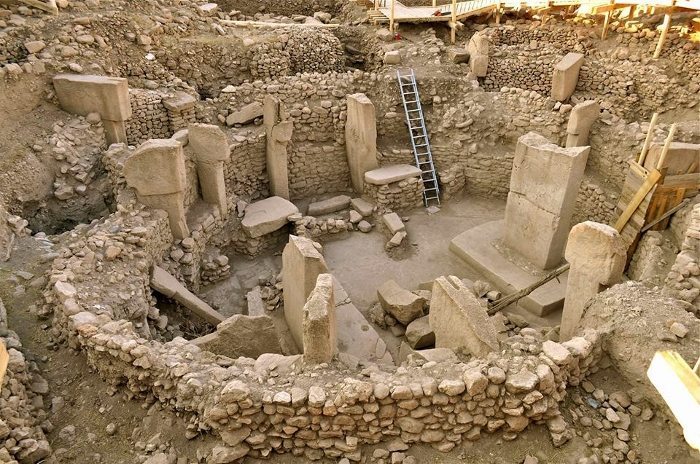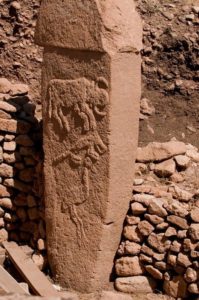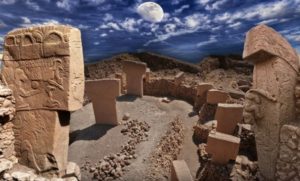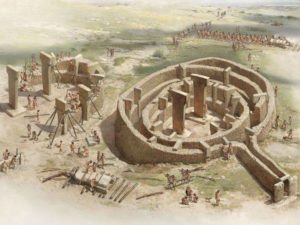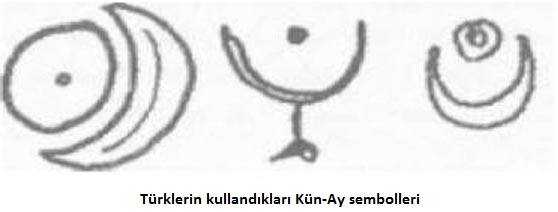The oldest civilization in human history. It’s thousands of years older than the Egyptian pyramids. 12 thousand years old. The secret of Göbeklitepe is still unresolved.
Göbeklitepe, where a shepherd finds his animals grazing, is the oldest archaeological discovery in the world. So far, only 5 percent have been unearthed. There are many claims, rumors and modern-day myths about you.
There are archaeologists, historians, astronomers who say that the Temple of Abraham was built to worship Sirius, and that it is a similar belief and a parallel with Stonehenge, which has not yet revealed all the secrets.
There are also historians who argue that the temple at Göbeklitepe was a quartet along with the temples at Karahantepe, Sefertepe and Hamzantepe, which have not yet been excavated. There are historians who argue that the reason for the absence of Bones is that there is no burial tradition and that it is believed that the dead are “buried in The Sun”, that is, that the bodies left in the open air are eaten by birds of prey, and that when the birds ascend to the sky, the souls of the dead also rise to the sky.
Göbeklitepe is the oldest temple in the world, the “place where religion was born” and even the “Garden of Eden”. It’s true he’s completely changed the history books, but could it be “garden of Eden”?
German archaeologist Klaus Schmidt, who led the excavations, said: “all the evidence shows that this is the birthplace of humanity. Göbekli Tepe was a temple in the Garden of Eden where Adam and Eve lived.”
German archaeologist Schmidt claims that the Garden of Eden, where Adam and Eve were expelled, is in Sanliurfa. Archaeologist Klaus Schmidt, who asserts that Göbekli Tepe is the place depicted in the scriptures, argues that the findings prove it.
Schmidt suggests that the place where Adam and Eve were expelled from the fruit of the forbidden apple tree was “Göbekli Tepe”, based on finds dating back 14 thousand years.
How was it discovered?
In 1994, a shepherd grazing his flock found stones with rectangular carvings on them in Göbekli Tepe, 15km north-east of Sanliurfa, and took them to the authorities. Klaus Schmidt, a fellow of the German Archaeological Institute in Istanbul, went to the region and began investigations.
On the 45 T-shaped stone monuments unearthed during the excavations, there are figures of wild pigs, ducks, snakes, lions, fish and people engaged in hunting. It is estimated that the area, where hundreds more stone monuments are expected to be removed, was used as a temple. Each of these monuments weighs 15 tons and is 6 meters high.
Considering that the Great Pyramids in Egypt are 4,500 years old and Stonehenge in England is 6 thousand years old, it is stated that this excavation is the most important archaeological dig ever made in the world.
Is the garden of Eden?
According to Schmidt, Göbekli Tepe, which is now barren, was once a very fertile area. However, humanity caused the destruction of the environment, causing the destruction of this “paradise”. Stones found in Göbekli Tepe, M.He. He was buried in 8000.
Schmidt also defends his claim by quoting scripture. The Bible says that the garden of Eden is west of Assyria. Göbekli Tepe is here. It is known that the garden of Eden is surrounded by 4 Rivers, Two of which are Euphrates and Tigris.
The Assyrian tablets mention a civilization called Beth Eden. Its location is described as the location of Göbekli Tepe. The Torah also states that the garden is in northern Syria.
The word Eden means plain in Sumerian. Göbeklitepe is just inside the Harran Plain.
“This place is so extraordinary that the human mind has a hard time understanding it,” says Steve Mithen of the University of Reading.
Sirius Claim
Italian Archeo-astronomer Giulio Magli of the Polytechnic University of Milan claims that Göbeklitepe, like Stonehenge, was made to track the movements of celestial bodies and worship them. Magli based his claim on his simulation of the position of the stars in the sky when Göbeklitepe was built.
The Italian astronomer says that stars have changed their position over the last thousand years due to the movement of the Earth on its axis, and that stars that once appeared near the horizon have risen and been seen in different positions, and that it may take thousands of years for them to reappear. Sirius is the fourth brightest celestial body in nightfall, after the Moon, Venus and Jupiter. Magli says that the ancient Egyptian calendar was prepared using the movements of Sirius, which may have served similar purposes thousands of years ago at the latitude where Göbeklitepe was located. “Sirius looked below the horizon 9,300 years ago. I think Göbeklitepe was built on the birth of a star.”
Göbeklitepe
Göbeklitepe Höyüğü is a worship site that was discovered in 1963 in şanlıurfa. The importance of the nine-hectare excavation site was understood by a peasant who took the carved stone to the museum while ploughing the field.
It is located near the village of Örencik, an 80-minute drive from şanlıurfa. In 1995, excavations were started for the first time in cooperation with the German Archaeological Institute and the Museum Directorate of Sanliurfa. Excavations German archaeologist Assoc. Dr. September and October each year, it is conducted under the direction of Klaus Schmidt and is held in a 10-week process.
As a result of the excavations carried out to the present day, it became clear that it was a Neolithic Age settlement.
Architectural remains dating from the Neolithic period, which belong to ceremonial sites for worship, the stones with the obelisks and the figures of wild animals and plants embossed on them were unearthed. The importance of the region is that it houses the largest worshiping area that has been uncovered.
Located at the highest point of the mountain range bordering the Harran plain to the North, Göbekli Tepe is a cult center created by hunter gatherers. The models considered for the Neolithic period in the history of Archaeological Research bring to the present day the data that overturns the theories.
Göbekli Tepe, 30m in diameter. it consists of round and oval structures reaching to 20. Of these, 6 were discovered during the excavation and the others were determined as a result of measurements made using geomagnetic and georadar methods. The results obtained by these measurements support the view that Göbekli Tepe was a great meeting center that was chosen and created by mankind almost 12000 years ago, and was not covered with daily life-oriented spaces but with ceremonial and monumental structures.
What makes Göbekli Tepe so unique and special?
Göbekli Tepe is 7000 – 7500 years older than the oldest known settlements, the oldest known structures, the oldest known evidence of habitation!
It was nominated for the World Heritage List by UNESCO on April 15, 2011 and placed on the provisional list. It is estimated that the region, which is within the borders of our city of Sanliurfa, which the local people described as a sacred region and visited continuously, dates back to 10,000 – 8,000 BC as a result of the excavations carried out.
Göbekli Tepe, a region identified by the University of Istanbul and the University of Chicago in 1963, did not receive the attention it deserved until 2007. Until it became clear that the findings encountered by Professor Klaus Schmidt, an archaeologist at the German Archaeological Institute had no precedent in the world literature.
Göbekli Tepe’s connection with the Early Turks
The terms and conditions on the Earth for the period in comparison with urbanized is showing signs of life here people, first supplying them with the owner of the animal, architectural structure, agriculture originated, sculpture, painting and hunting they are quite advanced in the monotheistic faith of the center of the Turks who live here first and even so it turned out that ten were Turks.
The fact that the network of communication and Unification reached many miles away, the formation of unity and order, the coexistence of both Hunter and gatherer and the development of Agriculture, the fact that this pre-discovered Turkish society is very social, and that it is a very developed community, is full of contradictions enough to subvert the known knowledge that makes this discovery important.
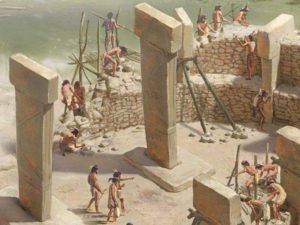
The fact that some of the tools and symbolic stones in the region belong to the Cappadocia region, some of them feature the northern Black Sea, some of them belong to Van and its vicinity, and some belong to the territory of Bingol proves that the region is a center of belief and meeting; that they live in communities and are single-centered. In fact, human beings have proven that there is a very large civilization stretching across borders, all the way to northern Iraq and Syria.
Traces of Early Turks in the ruins of Göbekli Tepe
* On all the remains, many symbols considered sacred by the front Turks were used.
* Pictured Pike bird
* Şahmeran-like snake figures are depicted
* Kün-Ay symbol, which is the symbol of spring, has been found in the pre-Turks
* Tamgas with sound-syllables integrity representing entities in pre-Turks
* The Ant Goblet, the main symbol of the son, symbolizing rebirth in the pre-Turks, and the main symbol of Umay
* Symbol similarities on many obelisks found
We also understand that coexistence, strong Guard regiments and so much power in the communication network, their architectural structures are not an explanation in the current technology.
With the information I have given above, it is necessary to emphasize once again that many features in the world belong to the pre-Turks for the first time and that they took place in the Anatolian lands. Why?
The minority rights used by the alliance states to occupy Anatolia throughout history before and after the liberation struggle, the reasons for forced migration with the relocation law, etc. the most recent article 7 of the Treaty of Sevres, which will excuse the Flying Bird for the establishment of an Armenian State in the east, is the message of the alliance states, ‘we were the owners of those regions before you and we are taking what is ours’.
Another detail is that our ancestors brought together reason and faith in a very successful way, and we understand that they have a respectful and connected understanding of each other.
In a belief that dates back to long ago, Christians in the Hellenistic period and Jews in the Torah claimed that Anatolia was the Promised Land. With this new discovery, this bond is rotten, too.


